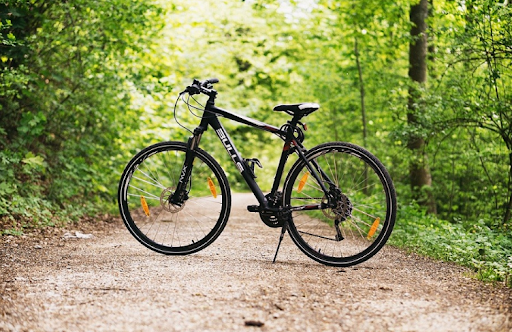Gears help you ride better
With these mechanical wonders, you can traverse different terrains smoothly and even power up steep hills with much ease and comfort. If you’re climbing mountains or riding in the city streets, a geared bike is the easiest and most efficient way to go. The best gear cycles have gears on the front of the bike where the pedals are, and on the back wheel. Both sets of gears are controlled by derailleurs and shifters.
Back wheel gears:
You can control the rear derailleur with the right handlebar shifter. Riders use the right shifter more frequently as the back gears are smaller and fine-tune the pedal resistance.
Front/pedal gears:
Riders use the left handlebar shifters to control the front gears and derailleurs. The left shifter gives you more dramatic changes. Kids and urban bikes generally have just one shifter on the right side, meaning that there is just a rear derailleur.
Using gears to pedal
Now, look at the symbols/number printed on the shifters. The larger the number, the harder it is going to be to pedal. This is good when you have low resistance when riding down a slope or riding faster on levels surfaces.
The smaller the shifter number, the easier it will be to pedal. This speed is ideal for going up an incline or against wind speed.
Tips to know about shifting gears
- Shift the gears only when riding forward and when the bike is in motion.
- Avoid shifting the gears while riding sloped surfaces or when applying pressure on pedals.
- Shift gears just before riding onto sloped surfaces.
Purpose of each gear
- The smaller gears help you with pedalling difficulties when you’re going uphill or to reach higher riding speeds
- The medium gears are suitable for regular cruising on flat terrain and streets.
- Use the front gears to any heavy gear changes.
- Use the smaller rear gear for making minor changes to the best gear cycle.
Quick gear shifting summary
- Using your left shifter, you can change chains/gears up front.
- You can switch one of the rear gears (which is how you’ll most often do it).
- When using the shifter, pedal lightly for smoother shifting. Avoid backpedaling.
- You should shift into a higher gear; if you’re pedalling too fast.
- Consider changing over to another gear if you pedal too slowly and have difficulty turning the pedals.
- Last but not least, practice makes everything perfect. Play around with shifting, and try riding in different gears to see how it feels.
How to use and change gears on your cycle?
No matter what gear you choose, your cycle will work. Finding the right combination on the best gear cycle will make riding a breeze. See how each of the three gears can transform your riding experience:
| Low Gear | |
| Rider Level | Beginners, amateurs or those who recently started riding |
| Suitable for | Riders who like going uphill or downhill, everyday riding |
| Benefit | It is easier to use this gear to climb up slopes slowly and steadily |
| Normal Gear | |
| Rider Level | Intermediated riders who use their bikes daily |
| Suitable for | everyday riding on flat ground with low resistance |
| Benefit | It is easier to change the gear up or down as the road surface changes |
| High Gear | |
| Rider Level | Experienced bikers who can ride fast |
| Suitable for | descending, accelerating, or going fast |
| Benefit | You travel faster when travelling a greater distance on every pedal turn. |
Are you able to shift gears while pedalling?
You cannot shift gears on your ladies’ cycle once you have stopped pedalling. Instead of completely stopping the pedal, you must gradually reduce the pedalling force and shift gears.
Which gear is best for cycling?
While riding uphill or against the wind, shift to an easier gear. When there’s a tailwind or riding on flat terrain, you’ll need higher gear. You are better off shifting before a terrain change if you’re uncertain. It’s especially important when climbing a hill. If you anticipate an incline, shift gears beforehand.
You can then experiment with different gear combinations for different situations after getting more familiar with them. Use the front chainring and larger rear cog when riding uphill or into a headwind whenever possible. It would help if you use a range of rear cogs on your ladies’ cycle when riding downhill.
Summary: It is easy and fun to ride a bike with different gears, regardless of the terrain. As a result, we’ve put together this handy guide, which covers every aspect of shifting gears on your bike.
In most geared ladies’ cycle models, there will be either one, 2, or even three chainrings in the front. These chainrings are attached to the pedal crank and between 7 to 12 cogs in the back. This cog set in the rear wheel is known as the cassette. Pedalling is easier when you change the rear cog from the smallest to the largest.
You can accelerate faster with a lower, easier gear since the chainring is smaller upfront and the large cog is at the back. When you’re climbing a hill or starting from a stop, you can do this to get started. We intend on using this article to give you useful tips to help you improve your cycling skills by explaining how gears work.
If you are shopping around for a nice cycle on emi online, sign up our EMI Network Card. With no down payment required and easy EMI, it’s easy to purchase cycles at affordable prices.
Read more: Enjoy Travelling With One of The Best Avon Cycles
